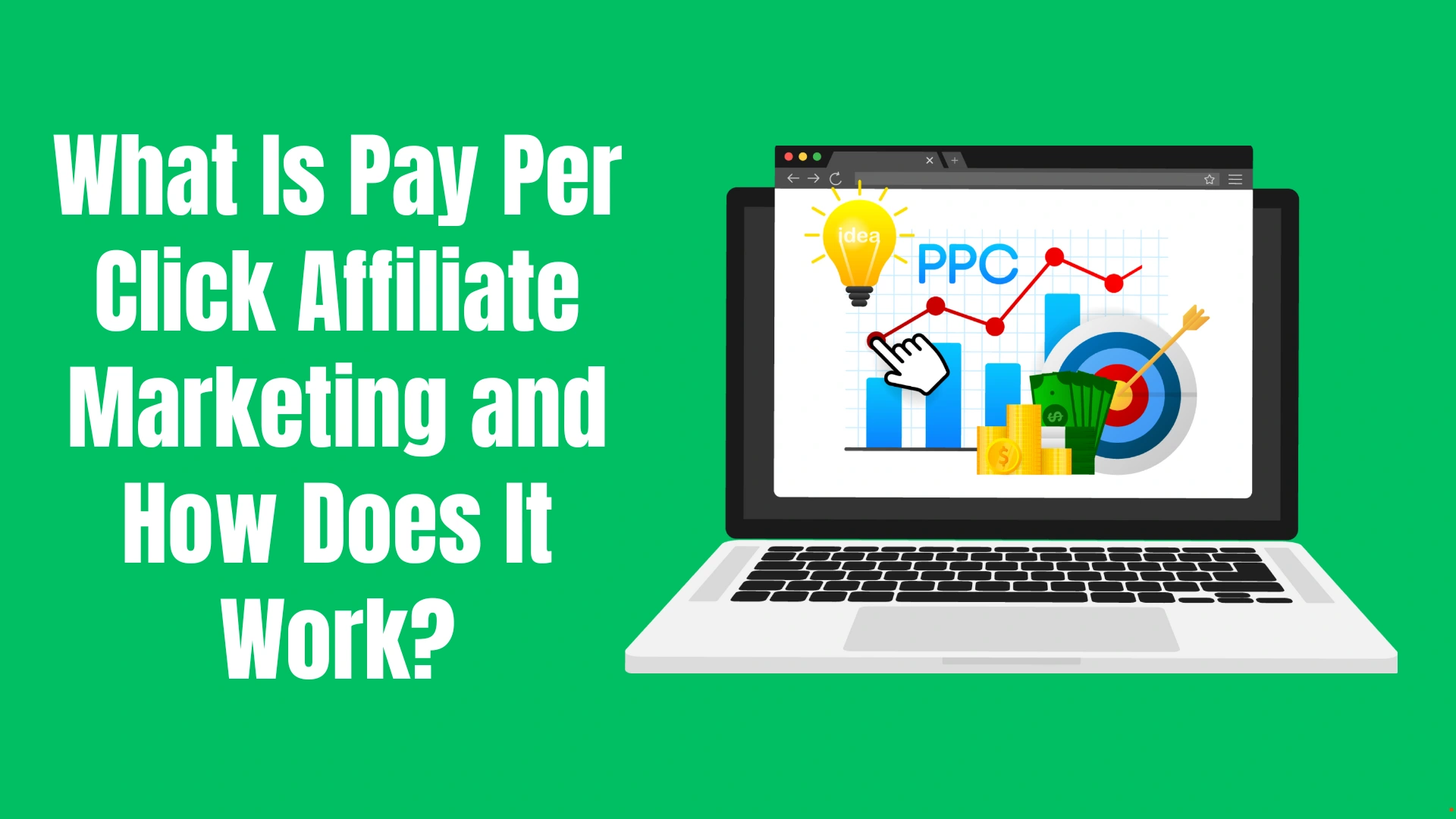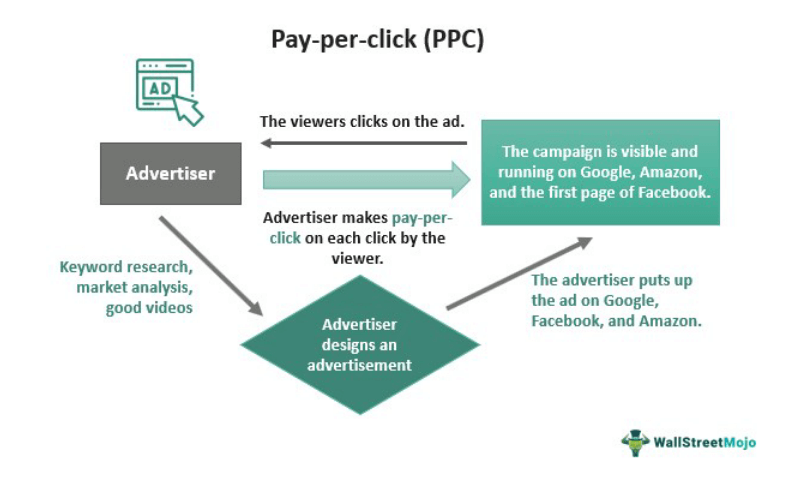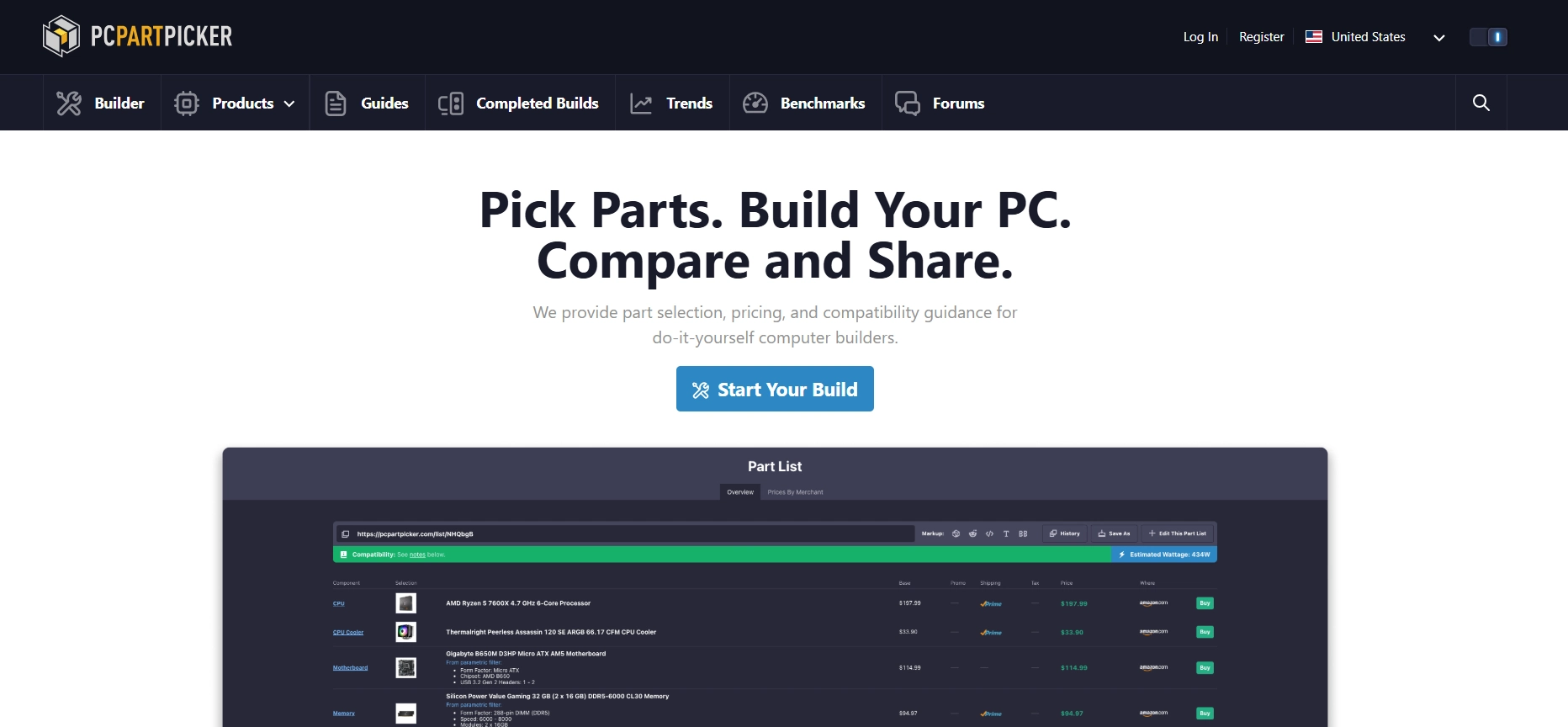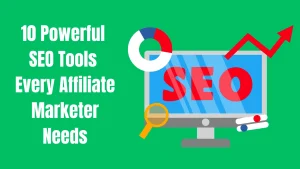What Is Pay-Per-Click (PPC) Affiliate Marketing and How Does It Work?

Pay-per-click (PPC) affiliate marketing is one of the fastest ways to earn commissions online. You get paid when someone clicks on your affiliate link; no need for them to buy anything. It sounds simple, but there’s more to it than just dropping links everywhere.
The trick is finding the right traffic sources. Some affiliates use Google Ads or social media to drive clicks, while others rely on blogs or email marketing. But not all traffic is equal. Random clicks won’t make you much money. You need targeted visitors, people who are actually interested in what you’re promoting.
I’ve seen many beginners burn through ad budgets chasing cheap clicks that never convert. I’ve also seen tons of smart marketers turning small campaigns into a steady income. The difference is strategy.
Picking the right offers, using the best traffic sources, and tracking results. That’s how you make PPC affiliate marketing work. So, what is pay-per-click affiliate marketing and how does it work? Let’s dive in.
Key Takeaways
- Pay-per-click affiliate marketing operates on a commission-based model, rewarding affiliates for clicks rather than sales.
- This advertising method allows digital entrepreneurs to monetize their content efficiently with minimal financial risk.
- Businesses often see significant returns, with average profits of $2 for every $1 spent on PPC campaigns.
- PPC can generate faster results compared to traditional SEO methods, making it ideal for quick traffic boosts.
- Understanding the nuances of PPC is essential for maximizing campaign effectiveness and profitability.
What is Pay-Per-Click Affiliate Marketing
Pay-per-click (PPC) affiliate marketing is a way to earn money by promoting ads. Affiliates place ads on their websites, blogs, or social media. Each time someone clicks an ad, the affiliate gets paid. Unlike other affiliate models, you don’t need to wait for a sale, just a click counts.
This model works because advertisers want traffic. They pay affiliates to send visitors to their sites. The more clicks an ad gets, the more money an affiliate can earn. PPC is popular because it’s simple, measurable, and doesn’t require selling anything directly.
Affiliates use different platforms to run PPC ads. Google Ads and Bing Ads are common for search engine traffic. Facebook Ads and TikTok Ads work well for social media. Native ad networks like Taboola and Outbrain also offer PPC options. The right platform depends on the audience and niche.
Success in PPC affiliate marketing depends on choosing the right ads. High-paying keywords bring better earnings, but they can also be expensive. Good targeting helps avoid wasting money on useless clicks. Smart affiliates test different ads and adjust their strategies based on performance.
PPC marketing is profitable, but it takes effort. Affiliates must track campaigns, refine keywords, and improve landing pages. Done right, it’s a great way to earn money without needing to sell products directly.
How Pay-Per-Click Affiliate Marketing Works
Pay-per-click (PPC) affiliate marketing lets affiliates earn money by displaying partner ads on their websites. Every time a visitor clicks on an ad, the affiliate gets paid. This method is popular because it creates a direct income stream without needing to sell products.

For PPC to be profitable, you need to target the right audience. Businesses only pay when someone clicks their ad, making it a cost-effective way to advertise. Done well, PPC can generate $2 in revenue for every $1 spent.
Choosing keywords wisely is essential. Keywords with a low competition score (5-10) tend to perform best, bringing in more traffic at a lower cost. Improving landing pages also plays a big role; well-optimized pages can increase conversion rates by up to 20%.
A key metric in PPC is Earnings per Click (EPC), which shows how much money you make for each ad click. A higher EPC means better profits from your affiliate campaigns.
Tracking and optimizing these numbers helps affiliates maximize earnings. When used strategically, PPC can be a powerful way to grow your affiliate business and increase your marketing success.
Benefits of Pay-Per-Click Affiliate Marketing
PPC affiliate marketing is one of the fastest ways to drive traffic. Unlike SEO, which can take months, PPC ads start working within minutes. You only pay when someone clicks, making it a cost-effective option.
Another big advantage is precise targeting. Advertisers can choose who sees their ads based on interests, location, and search behavior. This makes campaigns more effective. PPC ads often have conversion rates up to 50% higher than other digital marketing methods.
Flexibility is another plus. Affiliates can adjust campaigns in real-time based on performance. Google Ads, for example, can generate up to $2 for every $1 spent, a 200% return.
PPC also works well with remarketing, bringing back visitors and boosting conversions by up to 70%. With an average click-through rate of 1.91% for search ads, PPC remains one of the best ways to reach and engage potential buyers.
| Benefits | Description |
|---|---|
| Immediate Visibility | Results can be seen in minutes to hours, offering a quick way to attract traffic. |
| Targeting Precision | Allows demographic and behavioral targeting, increasing effectiveness. |
| Cost Efficiency | Advertisers only pay for clicks, reducing unnecessary advertising costs. |
| Real-Time Adjustments | Campaigns can be optimized based on immediate performance data. |
| High ROI | Potential to earn $2 for every $1 spent, representing a 200% ROI. |
Picking the Best Pay-Per-Click Affiliate Programs
Not all PPC affiliate programs are worth your time. Some pay more, while others have stricter rules. Choosing the right one makes a big difference in your earnings. Here is how to do it:
Check the Requirements: Before signing up, see if you qualify. Some programs require a certain number of visitors each month. Others only accept sites in specific niches. Google AdSense, for example, pays about 80% of ad revenue after fees but requires a $100 minimum payout. Payments come every 30 days.
Understand the Payment Structure: Programs pay in different ways. For instance, Skimlinks gives 75% of commissions to affiliates and claims to pay better than others. Their minimum payout is $65, and they send payments every 90 days. Always check when and how you’ll get paid before joining.
Pick a Niche That Fits: Sticking to one niche makes you more credible. A tech blogger promoting software ads will earn more than one randomly promoting fitness ads. The more targeted your content, the better your chances of making money.
Must Read: How to Choose the Best Niche for Your Affiliate Marketing Business
Choose the Right Ad Type: Ads come in many forms; text, banners, video, and more. What works best depends on your audience. Some readers ignore banner ads but engage with in-text links. Test different formats to see what gets the best response.
Measure Your ROI: A good program provides clear performance data. The average ROI for affiliate programs is about 130%. That’s a solid return, but only if you pick a program that tracks results well.
If you’re new, consider Pay-Per-Action (PPA) programs. They only charge when users take specific actions, making them cost-effective.
Take time to compare options, check commission rates, and read the fine print. The right program can maximize your earnings while keeping things simple.
Pay Per Click Affiliate Marketing Strategies for Beginners
For beginners in Pay-per-click (PPC) affiliate marketing, using the right strategies is crucial.
- Start by finding high-traffic keywords with less competition. This helps you reach the right people and boost your campaign’s success.
- Creating ads that grab attention is also important. Your ads should have clear calls to action and eye-catching visuals. This can lead to more clicks and, eventually, sales.
- Optimizing your landing pages is crucial. Make sure they match your ad’s message to increase your chances of making a sale. Good landing pages help users buy easily.
- Keeping an eye on your campaign’s performance is essential. Check your data often to see where you can improve. Try A/B testing to see what works best for your audience.
- Staying current with marketing trends is important. Join online marketing groups to learn new emerging trends and also get support from others.
Knowing the best strategies for your niche is vital. With affiliate program commissions ranging from 5% to 50%, the right approach can greatly boost your earnings.
Top Pay-Per-Click Affiliate Programs to Consider
Looking into affiliate marketing? Finding the best PPC programs is the core to making more money. Many platforms offer great features for different niches and marketing styles. Here are some top Pay Per Click affiliate programs to look at:
Here’s how you can complete the table based on common affiliate ad networks:
| Program | Commission Structure | Minimum Payout | Cookie Duration |
|---|---|---|---|
| Google AdSense | 80% of ad revenue after fees | $100 | 30 days |
| Ezoic | Up to $15 EPMV/RPM | Not specified | Not specified |
| Mediavine | Starting at 75% revenue share | $100 | 30 days |
| AdThrive | 75% revenue share | $100 | Not specified |
| Skimlinks | 75% revenue share | $65 | 90 days |
| Raptive | Varied, with referral bonuses | $25 | 45 days |
| Media.net | 70% revenue share (estimated) | $100 | 30 days |
| Infolinks | CPC/CPM-based revenue share | $50 | Not specified |
| PropellerAds | CPM-based revenue share | $5 | 30 days |
| Revcontent | CPC-based revenue share | $50 | Not specified |
Each program has its benefits and needs for different marketers. Choosing the right program depends on your goals. Look at commission rates, cookie durations, and minimum payouts. This helps you pick the best affiliate marketing programs for your audience.
How to Get Better Results from Your Pay-Per-Click Campaigns
If you want your PPC ads to perform well, start with solid keyword research. Use KWFinder or similar tools to find long-tail keywords. These bring in better-quality traffic because they match what users are actively searching for.
1. Test Different Ads – Not every ad will perform the same. Run A/B tests to compare different headlines, images, and calls to action. Small adjustments can lead to big improvements in clicks and conversions.
2. Improve Landing Page Speed – Your landing page should load in under 3 seconds. Slow pages push visitors away, reducing conversions. Sites that load faster keep users engaged longer.
3. Make It Mobile-Friendly – More people browse on their phones than ever before. By 2025, mobile users will hit 5.7 billion. Make sure your site works smoothly on all devices.
4. Use AI for Better Targeting – AI tools can help you find better keywords, spot trends, and improve your ads. They analyze performance data to show what’s working and what’s not.
5. Automate Bidding for Better Results – Smart bidding adjusts bids automatically based on real-time data. This helps you get the most out of your budget while improving ad performance.
6. Retarget Interested Users – Not everyone buys the first time they visit. Remarketing helps you reach past visitors, reminding them about your product. This can boost conversion rates significantly.
7. Add More Details to Your Ads – Ads with extra information like prices, discounts, or shipping details get more clicks. People like knowing what they’re getting upfront.
8. Run Ads on the Right Days – Some days perform better than others. Tuesdays and Fridays often bring more engagement. Track your results to see when your audience is most active.
9. Optimize for Voice Search – More people use voice search daily. Use natural language and long-tail keywords to capture these searches. This can bring in extra traffic with less competition.
Follow these strategies, and your PPC campaigns will bring in better traffic, more clicks, and higher earnings.
Common Challenges in Pay-Per-Click Affiliate Marketing
Pay-per-click (PPC) affiliate marketing sounds simple; run ads, get clicks, and make money. But in reality, it comes with its own set of challenges. If you don’t manage them well, your budget can drain fast, and your results may not match your expectations.
One big issue is high competition. Many affiliates bid on the same keywords, driving up costs. If you don’t choose the right ones, you’ll spend more than you earn. Finding lower-competition keywords can help, but it takes research and constant testing.
Click fraud is another problem. Some clicks come from bots or competitors trying to waste your ad budget. Many ad platforms filter fake clicks, but not all of them get caught. Watching your traffic sources closely can help you spot unusual activity.
Ad fatigue is real. If people see the same ad too many times, they stop paying attention. This leads to lower click-through rates and wasted money. Changing up your creatives, testing new angles, and refreshing your campaigns regularly can keep your ads effective.
Tracking conversions isn’t always straightforward. Use Google Analytics to help you track your PPC campaigns. Some users click an ad but don’t make a purchase right away. They might return days later through a different link. Without proper tracking, you won’t know which ads are actually working. Using tracking tools and setting up proper attribution helps fix this.
Finally, managing budgets can be tricky. PPC can eat through money fast if you’re not careful. Some days your ads will perform great, and others they won’t. Without a solid strategy, you might spend more than you make. Keeping a close eye on spending and adjusting bids regularly is key.
PPC affiliate marketing works, but it’s not a magic button for instant profits. It takes patience, testing, and constant learning. If you can navigate these challenges, you’ll be on your way to building a profitable campaign.
Case Studies: Successful Pay-Per-Click Affiliate Marketers
Success in Pay-Per-Click (PPC) affiliate marketing isn’t just about running ads. It’s about strategy, audience targeting, and smart budgeting. Let’s break down three well-known affiliate marketers who used PPC to build profitable businesses.
“This Is Why I’m Broke” – A Masterclass in Niche Targeting

“This Is Why I’m Broke” is a viral product discovery site that makes over $20,000 per month from Amazon Associates. PPC plays a big role in driving their 2.8 million monthly visitors. Their success comes from two things: smart ad placement and knowing their audience.
Their ads highlight fun, quirky, and impulse-buy products. This keeps users engaged and increases click-through rates. The site’s design also pushes visitors toward affiliate links, ensuring they convert at a high rate. By focusing on high-traffic, low-cost PPC ads, they maximize their revenue without overspending.
Wirecutter – Data-Driven PPC for Long-Term Success

Wirecutter, a product review site, made $150 million in six years while pulling in around 64,800 visitors per month. Their PPC strategy is built around search intent. They target keywords that match what buyers are looking for, like “best laptops for students” or “top kitchen knives.”
Their PPC campaigns send users to well-researched review pages, which boosts trust and conversions. Because their audience is already looking for product recommendations, their PPC investment pays off with high affiliate earnings. Wirecutter’s success shows that combining PPC with solid content can create a long-term, profitable business.
PCPartPicker – Leveraging PPC for a Massive Audience

PCPartPicker dominates the tech space with 29.05 million visits per month. The site helps users compare computer parts, making it a go-to resource for tech buyers. Their PPC success comes from precision targeting. They bid on keywords like “best gaming PC build” and “cheapest graphics card,” ensuring they attract users ready to buy.
Their landing pages are optimized with comparison tools and guides, increasing conversion rates. The site is valued at $77 million, proving that a strong PPC strategy can lead to massive growth.
These case studies prove that PPC in affiliate marketing isn’t about just throwing money at ads. It’s about understanding your audience, picking the right keywords, and making sure your landing pages turn clicks into revenue. With the right approach, PPC can be a powerful tool for growing an affiliate business.
| Affiliate Marketer | Monthly Traffic | Monthly Income | Key Strategy |
|---|---|---|---|
| This Is Why I’m Broke | 2.8 million | $20,000+ | Niche product showcases |
| Wirecutter | 64,800 | $150 million (2011-2016) | Product reviews |
| PCPartPicker | 29.05 million | $77 million (site worth) | Product comparison |
Conclusion
Pay-per-click (PPC) affiliate marketing is a solid way to make money online. It’s straightforward; affiliates place ads, and they earn money when people click. But success isn’t just about running ads. Picking the right affiliate programs, targeting the best keywords, and optimizing landing pages all play a role.
Good PPC campaigns don’t happen by chance. Marketers who track their data, test different strategies, and improve their content see better results. A well-placed ad can bring traffic fast, but if the landing page is slow or confusing, those clicks won’t turn into sales.
Costs can add up if you’re not careful. Some keywords are expensive, and competition is tough. Smart affiliates focus on keywords that match what people are searching for. This way, they get quality clicks without overspending.
Affiliate marketers who use PPC the right way can see big returns. Many businesses make double what they spend on ads. With the right approach, PPC can turn into a reliable income stream. The key is to keep learning, testing, and improving. Those who stay ahead of trends and adjust their strategies will always have an edge.
Frequently Asked Questions
What is Pay-Per-Click (PPC) affiliate marketing?
PPC affiliate marketing is when affiliates promote ads and earn money each time someone clicks. It’s different from other affiliate models because you don’t need to wait for a purchase—just a click earns you a commission. Advertisers pay for traffic, and affiliates help drive it.
How do affiliates make money with PPC?
Affiliates earn by displaying ads on their websites, blogs, or social media. When visitors click on the ad, the affiliate gets paid. The amount varies based on the advertiser, ad type, and keyword competition. Some clicks are worth a few cents, while others pay several dollars.
What are the best platforms for PPC affiliate marketing?
Google Ads, Bing Ads, and Facebook Ads are top choices. They offer large audiences and precise targeting. Native ad networks like Taboola and Outbrain also work well. The best platform depends on your niche and budget.
How much can you earn with PPC affiliate marketing?
Earnings depend on traffic, ad quality, and keyword costs. Some affiliates make a few hundred dollars monthly, while top earners generate thousands. Programs like Google AdSense pay affiliates around 68% of ad revenue, making it a popular choice.
What are common mistakes in PPC affiliate marketing?
Using the wrong keywords, overspending on ads, and not optimizing landing pages are big mistakes. Some affiliates also fail to track performance, leading to wasted money. The best approach is to test, analyze, and improve campaigns regularly.






